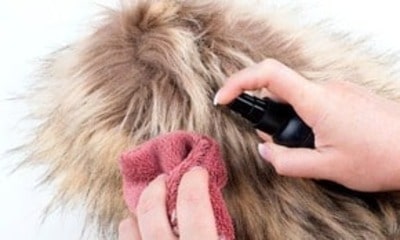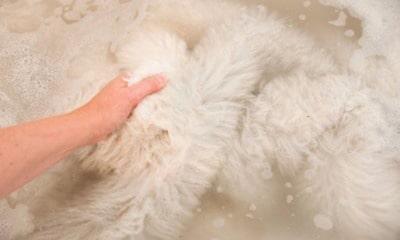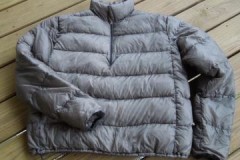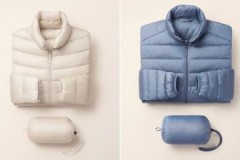Practical guide: how to wash a fur collar from a down jacket or jacket at home?
 Caring for fur products at home is not easy. The washing result is in most cases unpredictable.
Caring for fur products at home is not easy. The washing result is in most cases unpredictable.
Faux or natural fur may fade, become discolored, and lose its density and former softness.
Only knowing the secrets of washing fur from a jacket or down jacket at home will help you avoid damage to the product and costs for dry cleaning services.
Content
Preparation
You can refresh your fur collar at home. The main thing is to comply with certain conditions of the preparatory stage:
Before washing be sure to:
- remove the removable collar from the jacket;
- determine the type of fur (artificial or natural);
- carefully study the information on the manufacturer’s label about the temperature conditions and special cleaning conditions of the product;
- Before washing, gently shake the edge on the collar.
Washing a down jacket at home
The choice of washing method depends on the type of edge. In order to determine whether faux or natural fur was used during tailoring, it is necessary to examine the underside of the collar. On the synthetic material, thread overflow is visible on the reverse side.
If the edge is artificial
Hand washing will help refresh a long-pile faux fur collar.
The technology is simple and clear:
- Pour water into a container of suitable size, the temperature of which does not exceed 40C.
- We dilute liquid powder or washing gel in water.
- Soak the fur collar in a basin for thirty minutes.
- Gently rub soap foam into the long pile.
- We rinse the edge in plenty of water (cool).
- We take the product out of the water and place it on a horizontal stand and leave it for ten minutes.
- After the water has drained, gently blot the edge with a towel.
Dry the product away from heating devices, laid out on a horizontal surface. After the edge has dried, the long pile is carefully combed with a comb with rounded teeth.
For faux fur collars with short, thick pile, machine wash is more appropriate. Before loading the item into the machine, check the label on the possibility of automatic washing.
Algorithm of actions:
- The edge is soaked in a bowl of warm soapy water for fifteen minutes.
- After lightly squeezing the product with your hands, it is placed in the washing machine. For washing, choose a delicate cycle, using gentle liquid detergents for silk, wool and delicate fabrics.
- Wring out the collar by hand, blotting it well with a towel.
If natural
 You can preserve the shine and attractive appearance of natural fur trim by using only the manual washing method.
You can preserve the shine and attractive appearance of natural fur trim by using only the manual washing method.
Algorithm of actions:
- Liquid detergent for delicate fabrics or shampoo is diluted in a bowl of water.
- Use a soft sponge to rub soap foam into the edge.
- Wipe the collar again with a clean sponge.
- Lay the edge on a horizontal surface and leave until completely dry.
- Comb the villi with a sparse comb (preferably wooden).
Remove old stains from natural fur Some folk methods will help:
- A solution of water (one glass is enough), hydrogen peroxide (1 tsp) and ammonia (two drops) is poured into a spray bottle. Spray the solution over the collar and then allow it to dry. The dry collar is carefully combed with a comb.
- A mink collar is cleaned using semolina or starch. They are scattered onto the pile and lightly rubbed. After five minutes, the edge is shaken and combed.
- Arctic fox fur can be refreshed and cleaned with a sponge dipped in a vinegar solution.
- A collar made of astrakhan fur or rabbit skin will acquire its original appearance if you cover it with bran heated in the oven.
- Refined gasoline will help remove greasy stains. The stain is carefully wiped with a sponge soaked in gasoline, then with a clean cloth, after which the edge is combed.
For more information about cleaning natural fur, watch the video:
Is it possible to put a permanent fur collar in the washing machine?
If the fur is sewn to the collar of a leather jacket, there are not many options for refreshing it quickly and without loss. The collar sewn to the product can only be cleaned by hand., very carefully, avoiding moisture on the skin. For those who are not confident in their actions, the right decision is to dry-clean a leather jacket with fur.
 You can tidy up a down jacket with a sewn-on fur collar in the washing machine, choosing a delicate cycle and using liquid detergents.
You can tidy up a down jacket with a sewn-on fur collar in the washing machine, choosing a delicate cycle and using liquid detergents.
By adding two or three tennis balls to the drum of the washing machine, you can avoid the formation of lumps of unstraightened fluff in the jacket after washing.
The easiest way to refresh the fur is on the collar of your parka. The product can be washed by hand or in a machine. Parkas are washed at a temperature not exceeding 40 C, choosing a mode for synthetic fabrics, using soft (liquid) detergents.
Spin mode and automatic drying are disabled. Parkas made from membrane fabric are washed only by hand, using special powders for this type of fabric.
Drying
After cleaning the fur collar, it needs to be dried thoroughly. This is a very important point, since moisture remaining in the fur fibers can cause an unpleasant odor and damage to the product.
Dry the fur collar in a darkened room. Direct sunlight contributes to loss of color and brittleness of the villi. Under no circumstances should fur be split on a radiator or other heat sources or ironed.
Processing Tips
To prevent the edge of a winter jacket or down jacket from turning into a shapeless piece of fur, you should adhere to the following recommendations:
- Fur (both artificial and natural) should not be exposed to high temperatures. Fur collars are washed only at a temperature of 30-40C.
- When washing, fur should not be wrinkled or rubbed. All movements must be extremely careful.
- The edges of jackets and down jackets must not be treated with bleaching or chlorine-containing products.
Conclusion
Washing fur on winter clothes is an activity that requires certain skills, knowledge and accuracy. Following the technology for cleaning fur at home and understanding the intricacies of this process will help you quickly put your favorite item in order, saving money on dry cleaning fees.


